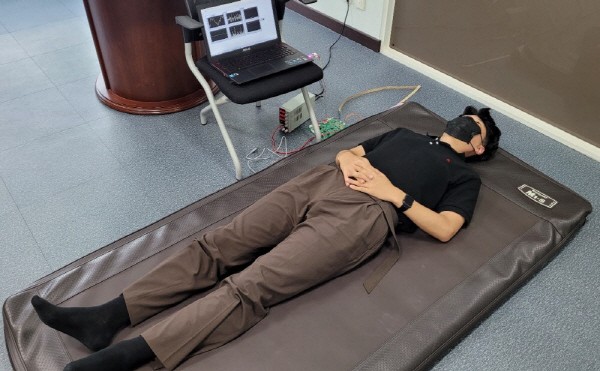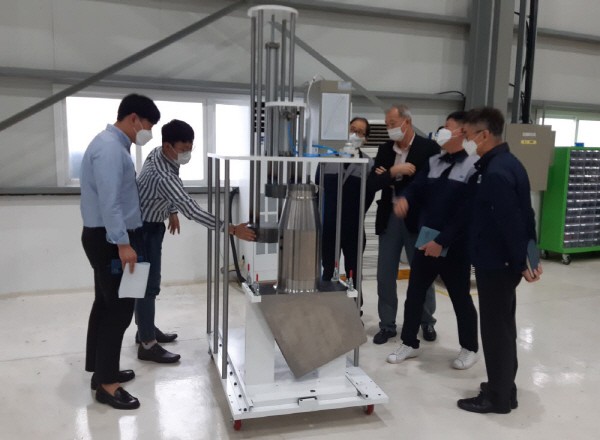Achievements of Gangwon-Gyeongnam Regional Innovation Cluster Project
The Gangwon and Gyeongnam regional innovation cluster projects are under the spotlight for their achievements in revitalizing local industries and economy, and developing new technologies and services.The Gangwon regional innovation cluster project has developed a 'packaged home care service' that reduces the false diagnostic rate,as well as the time and cost of testing by regularly measuring the patient's condition.Gyeongnam has laid the foundation for the food business for companies in the Gyeongnam cluster project from preoccupying technological competitiveness in the field of civil aircraft structures, which has difficult entry barriers.

According to the Korea Institute for Advancement of Technology (KIAT) on the 17th, the Gangwon regional innovation cluster research and development (R&D) project results are promoting the import substitution effect in the health care sector, as well as employment, and production induction, and value-added effects in the region.
In the Gangwon region, digital health care was defined as 'an industrial area where the health care industry and information and communications technology (ICT) converge to manage personal health and disease', and promoted related technology development. Gangwon region developed a 'package-type home care service' that measures the patient's condition at all times to reduce the false diagnosis rate as well as the cost of consumer examination time.It is a package-type home care services for patients with blood sugar monitor, cardiovascular and kidney disease.
It is expected that the patient's condition will be constantly measured and the hospital misdiagnosis rate will be reduced with the development of this service. In the case of consumers (patients), home care applications and measuring devices can be used to reduce test costs compared to hospital visits.
The monitoring module attached to the body was made smaller and thinner than competing products currently on the market. It is crucial to make the monitor as small and thin as possible since the monitor size and thickness are sensitive factors for users. It will be sold at a price 10% less compared to the lowest price of products that are already being imported and sold. Import substitution effect is expected with price competitiveness and quality at the forefront.
The wearable electrocardiograph developed in the Gangwon region is also expected to generate KRW 30 billion in sales through the business models for primary and secondary hospitals (about 6,000 internal medicine departments) and for arrhythmia patients (approximately 410,000 patients). Based on sales, the production induced effect is expected to be KRW 57.6 billion (Gangwon KRW 34.8 billion), the value-added effect KRW 22.8 billion (Gangwon KRW 14.2 billion), and the employment-induced effect 322 persons (Gangwon 209 persons) are expected.
Gyeongnam regional innovation cluster has secured technologies and price competitiveness in the existing aircraft structure field, which has been monopolized by global companies, and has laid the foundation for entering the market as a new supplier.
It was promoted to secure element technologies for the production of engine pylons and large structures for single-passage aircraft (25,000 pounds) civil aircraft.The engine pylon is a main component that transmits the load between the engine and the main wing structure and the functional role of connecting the hydraulic, fuel, and electrical systems between the engine and the aircraft fuselage.

Aircraft business was very difficult to enter the market due to high technical barriers of exclusive development of advanced companies and presence of existing subcontractors.In the Gyeongnam region, a preliminary research was conducted on the design of lightweight and low-cost pylons, and secured the same level of technology in the single-aisle class. Although the business is not at the stage of self-development and delivery in the domestic market, it has reached a level where it is possible to commercialize it through business and technical alliances and joint development with customers.
In order to overcome monopolized system of the existing market and the high technical barriers, Gyeongnam region proposed a revolutionary cost-saving plan by changing the manufacturing process and optimizing designs, rather than simply reducing the manufacturing cost of the existing manufacturing process. Gyeongnam is seeking to enter new markets through technical alliances with original equipment manufacturers(OEMs) and participation in joint development through design proposals that enhance price competitiveness of OEMs.
Byunggyu Kim, head of the KIAT regional industry group, said, “Local governments directly establish cluster nurturing plans according to local demand and conditions, and received positive results in both achievements and responsesfor the cluster projects carried out through local institutions.”
By Staff Reporter Bonggyun Ham (hbkone@etnews.com)